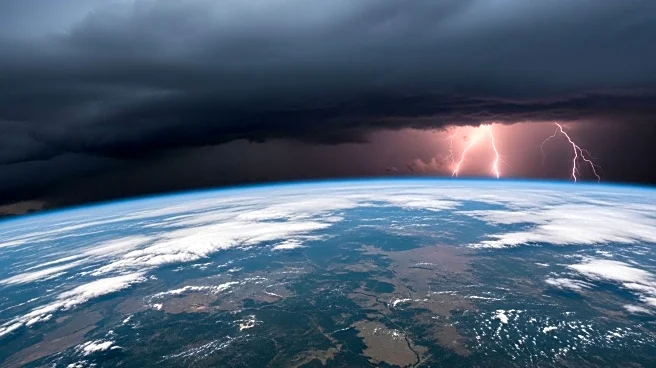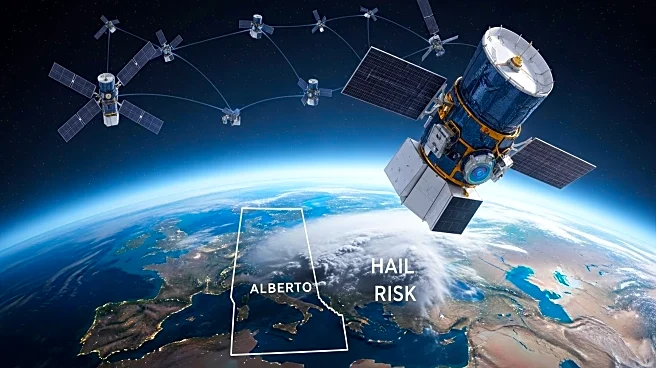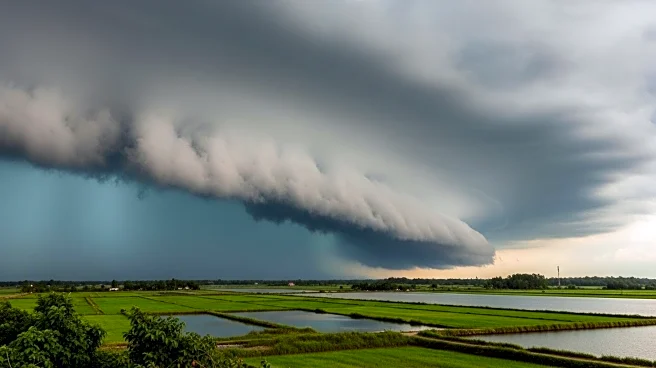What is the story about?
What's Happening?
NASA's Earth Observatory has captured satellite images showing extensive hail damage in southern Alberta, Canada, following a supercell storm on August 20, 2025. The storm, characterized by winds up to 93 miles per hour and golf ball-sized hail, left a visible scar on the landscape, affecting farmland, grasslands, and forests. The hail scar measures approximately 15 kilometers wide and 200 kilometers long. The storm caused significant damage to crops, trees, cars, and power lines, with farmers reporting extensive losses. Insurers anticipate claims in the coming weeks, adding to the financial toll of hail damage in Alberta, which has exceeded 6 billion Canadian dollars in insured losses over the past five years.
Why It's Important?
The event underscores the vulnerability of regions like southern Alberta to severe weather phenomena, particularly hailstorms, which can cause substantial economic damage. The collaboration between NASA and reinsurance companies aims to improve models of hail risks using satellite data, providing valuable insights into storm activity and risk. This data is crucial for the insurance industry, project partners, and the research community to better understand and mitigate the impacts of severe storms. The ability to quantify storm distribution and frequency with satellite measurements enhances the consistency and reliability of risk assessments, potentially leading to more effective strategies for managing and reducing economic losses.
What's Next?
NASA's ongoing research and collaboration with reinsurance companies will continue to refine models of hail risks, leveraging long-term satellite data records. This research aims to provide more accurate predictions and assessments of severe storm activity, aiding in the development of strategies to mitigate economic impacts. The insights gained from satellite data could inform policy decisions and insurance practices, enhancing preparedness and resilience against future severe weather events. As climate patterns evolve, the importance of accurate and reliable data will be crucial in adapting to and managing the risks associated with severe storms.
AI Generated Content
Do you find this article useful?














